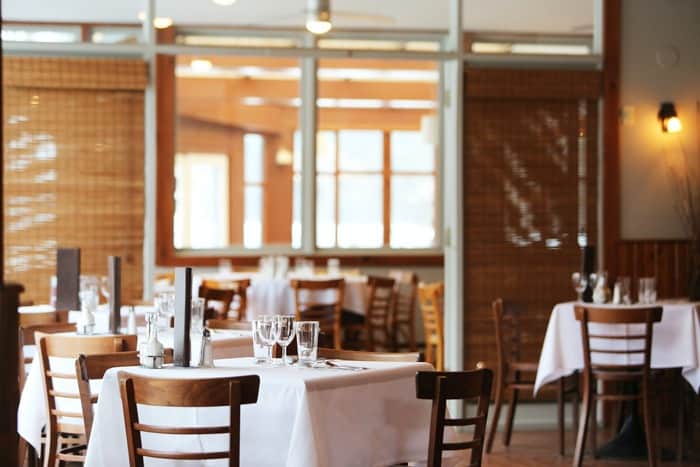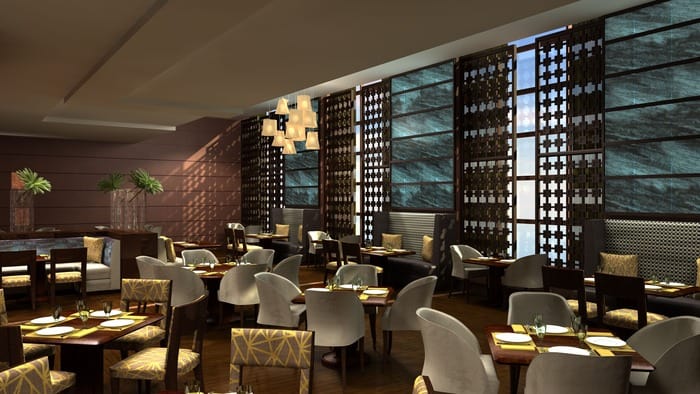In the dynamic world of hospitality, where the dining experience is crucial, restaurant owners and designers are continuously looking for new methods to improve the ambiance and functionality of their enterprises. The selection of commercial-grade restaurant furniture is an important step in this process. From chairs and tables to booths and bar stools, each piece contributes significantly to the space’s overall aesthetic appeal and comfort.
As consumer preferences change and technology advances, the restaurant furniture environment is changing dramatically. In this article, we look at the developing themes that will shape the future of commercial-grade restaurant furniture, including sustainability, versatility, technological integration, comfort, customization, aesthetics, durability, and maintenance.
Sustainability and Eco-Friendly Materials
Demand for sustainable and eco-friendly restaurant furniture is increasing as people become more concerned about the environment. Manufacturers are responding to this trend by using recycled materials in their designs, such as recovered wood and plastic.
Additionally, there is a shift toward biodegradable and easily recyclable furniture solutions, which aligns with modern consumers’ eco-conscious attitudes. By investing in sustainable furniture solutions, restaurant operators not only help the environment but also appeal to discriminating customers who value sustainability in their dining experiences.
Many furniture firms’ ethos is increasingly including sustainable manufacturing practices, such as the use of renewable energy sources and waste minimization. This commitment to sustainability not only benefits the environment but also enhances the brand image of restaurants that favor eco-friendly furniture options.
Modular and Versatile Designs
Flexibility and flexibility are important issues in restaurant design, as layouts may need to be altered to meet changing needs and events. Modular furniture provides an effective answer to this problem, allowing for quick rearrangement and customization as needed. Whether it’s a snug niche for personal gatherings or a vast area for huge parties, modular furniture can easily adapt the dining room to fit different events.
With the rise of smaller restaurants and pop-up concepts, adaptable furniture solutions that maximize space use are becoming increasingly important. The modular design is also cost-effective since it allows restaurants to invest in a core set of furniture items that can be rearranged and repurposed over time, eliminating the need for periodic replacements or upgrades.
Integration of Technology
In an age of digital workplace and technological progress, restaurant furniture is no exception to the trend of integration. Consider tables with wireless charging capability, allowing diners to conveniently charge their gadgets while enjoying their meals. Smart furniture equipped with sensors may collect vital information about client behavior and preferences, allowing restaurateurs to make data-driven decisions to improve the dining experience.
By embracing technology, restaurant operators can stay ahead of the competition and provide guests with seamless, technologically improved eating experiences. The incorporation of technology into furniture can go beyond functional purposes to include interactive features that engage and excite guests, such as digital displays or immersive audiovisual experiences.
Comfort and Ergonomics
Comfort is essential in the eating experience, and restaurant furniture plays an important part in making visitors feel relaxed and at ease. Ergonomic designs, with supportive shapes and adjustable features, encourage excellent posture and relieve discomfort, resulting in a more comfortable dining experience. High-quality materials, such as cushioned chairs and robust upholstery, improve comfort while also ensuring lifespan and durability.
Restaurant operators may create inviting rooms that encourage clients to remain and return by focusing on comfort and ergonomics when selecting furnishings. Research has shown that comfortable sitting improves consumer happiness and loyalty, resulting in more return business and positive word-of-mouth recommendations.
Customization and Personalization
In an increasingly competitive market, customization has emerged as an important distinction for restaurants looking to stand out. Customizable furniture solutions enable restaurateurs to incorporate their distinctive brand identity into the dining area, resulting in a unified and memorable experience for customers. From personalized upholstery with the restaurant’s logo to specific seating configurations tailored to the location, personalization provides limitless opportunities for creative expression.
By embracing customization and personalization, restaurant operators can create immersive eating experiences that appeal to their target demographic. Personalized furniture solutions can help businesses build a feeling of community and belonging among guests, making them feel valued and respected for their unique preferences and interests.
Aesthetic Trends
Aesthetic trends in interior design influence the appearance and feel of restaurant environments. Minimalist and Scandinavian-inspired designs with clean lines and neutral tones remain popular, radiating modern elegance and sophistication. However, there is an increasing preference for vibrant colors, patterns, and textures that bring visual interest and individuality to the room.
The use of natural components like wood and flora produces an inviting atmosphere that improves the whole dining experience. By staying on top of aesthetic trends, restaurant owners may create visually stunning venues that leave a lasting impact on guests. Including parts of local culture or heritage in the design can enhance the dining experience by generating a sense of authenticity and connection with customers.
Durability and Maintenance
Investing in long-lasting, low-maintenance furniture is critical for the lifespan and functionality of restaurant environments. High-quality materials, such as commercial-grade metal and hardwoods, are valued for their strength and resilience to wear. Easy-to-clean finishes and materials reduce maintenance requirements, letting restaurant workers maintain cleanliness standards with ease.
Restaurant operators may reduce downtime and operational disruptions while increasing the lifespan of their investment by prioritizing durability and maintenance when selecting furniture. Preventive maintenance techniques, such as frequent inspections and cleaning schedules, can help extend the life of restaurant furniture and save costly repairs or replacements later on.
Navigating the Evolving Landscape
As the restaurant industry evolves, so does the need for commercial-grade restaurant furnishings. Emerging trends are changing the way restaurateurs think about furniture choices and design, from sustainability and versatility to technological integration and customization. Restaurant operators who embrace and incorporate these trends into their establishments can create attractive, functional, and memorable eating experiences that appeal to current consumers.
As we look ahead, the possibilities for innovation in restaurant furniture are infinite, presenting exciting prospects for those willing to push the boundaries of design and hospitality. Finally, staying on top of these trends and investing in furniture solutions that meet patrons’ changing requirements and tastes will be critical to success in the competitive restaurant sector.

